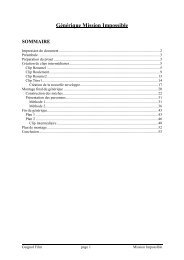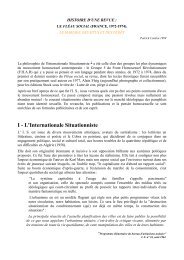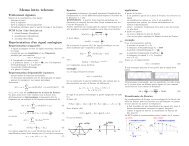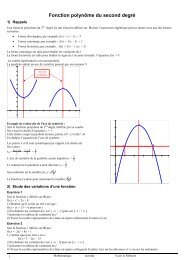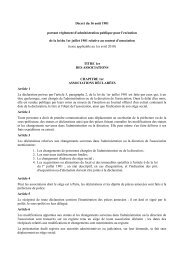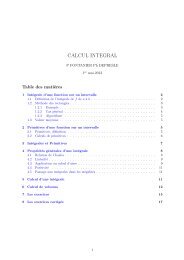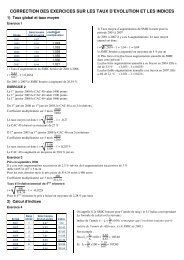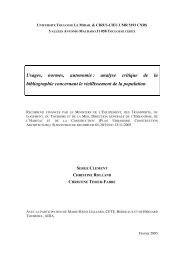internationalisation in science in the prism of bibliometric indicators
internationalisation in science in the prism of bibliometric indicators
internationalisation in science in the prism of bibliometric indicators
Create successful ePaper yourself
Turn your PDF publications into a flip-book with our unique Google optimized e-Paper software.
log growth (92--99) smoo<strong>the</strong>d<br />
3,00<br />
2,50<br />
2,00<br />
1,50<br />
1,00<br />
0,50<br />
y = -0,0009x + 1,972<br />
R 2 = 0,6027<br />
GROWTH vs OUTPUT - OECD<br />
not represented: USA , Canada, Tchek R & Slovaquia<br />
0,00<br />
0,00 200,00 400,00 600,00 800,00 1000,00 1200,00<br />
publication output 92 smoo<strong>the</strong>d<br />
trend on unweighted data<br />
Fig.4. Growth vs. Output<br />
Source: ISI data, process<strong>in</strong>g OST and INRA<br />
World growth rate <strong>of</strong> publications cannot be <strong>in</strong>terpreted as such, s<strong>in</strong>ce it<br />
reflects <strong>the</strong> ISI database coverage policy. Only <strong>the</strong> country comparative trend<br />
should be considered, with respects to biases studied <strong>in</strong> literature.<br />
But <strong>the</strong> pace <strong>of</strong> catch-up is slow. If <strong>the</strong> coefficient <strong>of</strong> variation is<br />
decreas<strong>in</strong>g, standard deviation among countries rema<strong>in</strong>s practically<br />
stable. Given <strong>the</strong> skew distributions, weight<strong>in</strong>g by country size<br />
(output) does not allow to record a clear move. The hierarchy <strong>of</strong> per<br />
capita scientific output <strong>in</strong> OECD, with Nordic countries, Switzerland,<br />
and <strong>the</strong> US ahead, is not likely to be deeply altered <strong>in</strong> a midterm<br />
future. Interchanges <strong>in</strong> ranks <strong>of</strong> p.c. output are rare (Kendall tau>0.87<br />
for OECD, >0.88 for EU15).<br />
Evolution is similar <strong>in</strong> <strong>the</strong> EU15 sub-group: same relation between<br />
growth rates and output, evidence <strong>of</strong> decreas<strong>in</strong>g non-weighted CV but<br />
imperceptible down-trend <strong>of</strong> weighted <strong>in</strong>dicators. These results tend to<br />
confirm our earlier observations (1999b).<br />
These data on p.c. output tend to support <strong>the</strong> hypo<strong>the</strong>sis <strong>of</strong> a slow<br />
move towards evenness. Aga<strong>in</strong> results on citation data confirm <strong>the</strong><br />
slight progress <strong>in</strong> <strong>the</strong> reduction <strong>of</strong> <strong>in</strong>equalities.<br />
3. Convergence <strong>in</strong> <strong>the</strong>matic specialization<br />
The third aspect <strong>of</strong> homogeneity trend we consider here is <strong>the</strong><br />
convergence <strong>of</strong> scientific specialisation. If <strong><strong>in</strong>ternationalisation</strong> <strong>of</strong><br />
output is assimilated to homogenisation at <strong>the</strong> world level, its<br />
empirical measure is by and large a reduction <strong>of</strong> discrepancies among<br />
countries, <strong>in</strong>clud<strong>in</strong>g <strong>in</strong> <strong>the</strong>ir specialisation patterns. Scientific<br />
specialisation is a complex phenomenon, l<strong>in</strong>ked to <strong>in</strong>ternal dynamic<br />
factors and public policy choices comb<strong>in</strong>ed with agglomeration and<br />
learn<strong>in</strong>g processes. In some cases, comparative advantages <strong>in</strong> terms <strong>of</strong>




